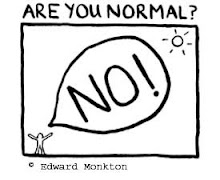On Saturday I spent the entire day in Soweto and Johannesburg. Emma and I left leafy Pretoria and headed south on the NI motorway. The drive itself is quite short (about one hour) amidst the roadworks occurring at a frenzied pace due to the World Cup approaching in 20 days. They are expanding the highway to accommodate the flow of traffic between the two cities - Pretoria visitors rely on Jo'burg's airport as their point of entry.
Driving through and around Johannesburg was a nice surprise. The downtown core is very built up and looking at it, you might just think you were in Boston, Detroit, or some other North American city. It looked lush as well with lots of beautiful trees and gardens. I was struck by how nice the cars were driving by us (Land Rovers, Mercedes, BMW, etc.); there is definitely some money to be made in that town. It looked nothing like the 'Gangster's Paradise' image people had told me about. (To relate the city back to Canada....it's like the Toronto, Pretoria is the Ottawa and Cape Town is the Vancouver of South Africa.)
The mountains surrounding Johannesburg were mined and are very flat and rugged looking. The mining began there in the late 1800s and only now are they revisiting some of the deposits for more gold due to advances in technology. We arrived in Soweto (South Western Township) after driving through the city and could immediately see the difference in architecture.
The township itself has been in existence since the 1930s. It became significant after the Apartheid movement forced blacks in Johannesburg out of the city and into the area now known as Soweto. It's currently it's own thriving suburb with both rich and poor areas...it's not all what you see and hear about on the news. The total population of Soweto is approximately 1/3 of the total population of Johannesburg.
Our first stop was in a slum. I was admittedly initially hesitant and awkward walking around people's homes/lives and I felt a bit like a voyeur. However, we were welcomed and shown around by a local who lives in the slum, and he put my mind at rest with his kind eyes. He said we were welcome and the community was curious about us as much as we were curious about them. Everyone we met said 'good morning'.
The slum had no running water (just communal taps), shared porta-toilets, no electricity and each resident had a tiny shack which housed families inside each. My car is about the same size as your average shack. The kids in the gravel street were staring up at us and wanting a picture (for a fee). They were very, very sweet and innocent. I couldn't help but wonder how these kids would survive and what their chances were at leaving Soweto or even the slums. They didn't look sickly though. Just dirty.
We carried on and saw where Winnie Mandela currently lives, the church were Desmond Tutu would give his public addresses and where police would eventually violently enter (there were bullet holes in the ceiling), Nelson Mandela's house (which is now a Museum), and the Hector Pieterson Museum which is located in the spot where that same young boy was killed in 1976 during the Soweto uprising. So much history in such a small little geographical area.
I was moved by how communal Soweto was. Everyone knew everyone else. They were all in it together and for each other...versus the gated off and separate rows of mansions in the 'whiter' areas. But it also struck me that despite Apartheid ending, the divisions are still very, very clear. Whites live here and blacks over there. The effects of Apartheid are going to take generations to overcome, where people truly mix and skin colour is not a dividing factor.
Then, in the evening, we went to a rugby match. No, this was not your ordinary rugby match. This was a semi-final, sudden death game between the Bulls (Pretoria) and the Crusaders (not sure but somewhere in New Zealand). The Bulls normally play at Loftus Stadium in Pretoria but they were not able to due World Cup preparations happening there. Therefore, this semi final was played in Soweto, at Orlando Stadium. And, since rugby is a 'white man's game', the historical significance of this event meant that 45 000 white people had to go to Soweto to watch their beloved team. I bet you that over half of that crowd never thought they would purposefully visit Soweto. It was quite the sight and an interesting social experiment if you will. It seemed to go just fine with this mix of boundaries. The organization of the event it self left much to be desired (TIA: This is Africa) but I am really glad I got to experience the event - for the sport and for the historical significance of the location. And, the Bulls won!!!
So, there you have the weekend update.
Brianna xo



No comments:
Post a Comment